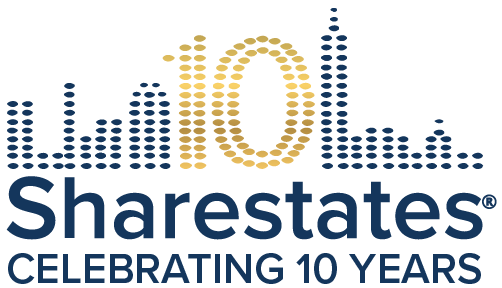Competition in private lending is driving interest rates down on several types of debt products, influencing debt terms. Between 2017 and 2018, private mortgage lending grew 37.8 percent, and that’s just one market segment. This growth is good for borrowers while lenders fight to stand out.
Take short-term bridge products, for example. Five years ago, it wasn’t unheard of to see loan rates at 12 or 13 percent. A couple of years later, they were around the 10 percent mark. In the last couple of years, they’ve fallen into the single digits, and it’s common to see rates in the 6 to 8 percent range. Give it another couple of years, if competition continues to proliferate, and I think it will, we could see interest rates dip below 5 percent.
This is already happening for large bridge loans. When you’re financing a couple of million dollars, the lower cost of capital translates into significant passive income.
In the fix-and-flip sector, lenders, six years ago, were funding 80 percent of the purchase and the same on rehabilitation costs. Loan rates were also in the double digits. But some significant changes in the private lending sector have driven these terms in a direction that is favorable to the borrower. Borrowers can now obtain 85 percent for acquisition and up to 100 percent for rehab costs. Advances at closing are also driving the market as lenders try to make their products more competitive. Again, interest rates are well below the double-digit mark and edging close to 5 percent, even as we’ve seen something of a slowdown in the fix-and-flip market.
Top 3 Drivers of Competitive Prices in Private Lending
It doesn’t matter what the sector is, private lending is growing. The JOBS Act of 2012 not only created new opportunities for lenders and new markets for borrowers, but it has also ensured the growth of these opportunities and markets for years to come. What it boils down to is that borrowers have their pick of the litter among the growing options. Lenders have to remain competitive if they’re going to stick around.
There are three general other market conditions influencing the direction of debt terms. Going into 2020, here are the top three drivers of competitive pricing in private lending:
- An influx of new lenders – The reason competition is heating up, fundamentally, is that new private lenders are entering the market every day. More than half of the $10.3 trillion in U.S. mortgage debt is provided by nonbank lenders. This will likely increase beyond 51 percent by the end of this year. According to ATTOM Data Solutions, the growth of private lending is due to banks not serving all borrowers’ needs.
- The influence of institutional investors – A good portion of these new lenders are institutional investors. Coming to the table with huge cash reserves, institutions that traditionally have not financed startups or introduced loan products are now beginning to do so.
- Broadening of the private lending sector – Private lenders are branching out into new loan categories. While mortgages are the most financed of private lending products, lenders are also financing student loans, home improvement, business startups, equipment, and business asset purchase and leasing, fix-and-flip projects, HELOCs and cash-out products, refinances, and more.
Each of these three drivers points to one main thing driving the terms in private lending: Competition. It’s a borrower’s market.
One More Thing Driving the Competition in Debt Terms
Private lenders are also faced with one more stark reality. There’s no loyalty among borrowers to any lender. The terms are dictating where borrowers go for their financing needs. That means lenders must treat their current customers well.
Whether we’re talking about marketplace lending platforms, institutional direct lending, or refinance products, existing customers expect royal treatment. If a lender has a borrower who has come back for several loans in the last three to five years, that borrower is going to be looking for better debt terms. There are several reasons for this:
- A borrower with a track record can prove they deliver results (and returns); that translates into lower risk
- Their successes, in a lot of cases, means they can personally guarantee their projects
- There’s another lender around the corner working to take that borrower away from you
When borrowers can walk in the door, plop down a half dozen closed and fulfilled contracts that turned a profit for the borrower (and the lender), can demonstrate their expertise in a particular type of real estate project, and show you a quote from your competitor, the only thing a smart lender can do is match or beat the competition’s offer. And that’s precisely what is happening in lending offices all over the country.
5 More Market Trends Developing in Private Lending
Competition in the private lending markets has the byproduct of creativity. What that means for the borrower are more options and better terms. What it means for the market as a whole is lenders doing whatever it takes to secure more business. That’s why these five market trends are beginning to develop now in the private lending markets, which will only make the market more efficient in the long run.
- A move toward long-term products – While fix-and-flips and bridge loans are still popular, there is a move toward long-term financing. Flippers are starting to see the opportunity in buying and holding properties, so they’ll take their rehab loan and convert it into a rental loan to create passive income streams from a percentage of their portfolios. This is being driven by housing prices that are out of reach for some would-be homebuyers. Another part of this is borrowers have some of their duplex and fourplex loans at Fannie Mae and Freddie Mac expiring, so they’re converting those loans into long-term products.
- Lender funds – As the competition heats up, lenders have to get creative. That’s why some are beginning to launch their own funds. The funds are going to happen anyway as more players get into the market. Savvy lenders create their own funds to keep the business in their doors.
- Partnerships – Lenders are beginning to partner with each other on certain types of products. As the private lending market matures, we’ll begin to see consolidations.
- Securitizations – Securitizations are also heating up.
- Floating terms – Borrowers favor ARMs and other floating terms. Cash-out refi is also popular items because they allow borrowers to lower their debt interest. They can then take that cash and reinvest it in other projects.
Conclusion
The current private lending market is a borrower’s market. Competition is high, and it’s driving down debt terms that lenders offer to borrowers. Borrowers can finance more projects, make larger acquisitions, and choose from among a diverse range of creative lending products. Loan underwriting is also tightening as more lenders take it in house.
Lenders want to ensure they get the right borrower. That’s why many private lenders now check FICO scores and verify information that a few years ago they didn’t bother verifying. To mitigate risk, large-project and high-risk lenders are looking at the construction and engineering reviews, judging environmental impact, and taking a closer look at project plans to ensure capital is well-invested. That’s another byproduct of the competitive environment.
One way lenders are controlling money flow is by requiring borrowers to access capital through draws and reimbursements. The property is security. Therefore, ensuring the project is done correctly protects the property and the borrower. Everyone wins in the long run.
Bottom line: Competition is benefitting borrowers at every level of the private lending market.
To learn more about Sharestates click below


